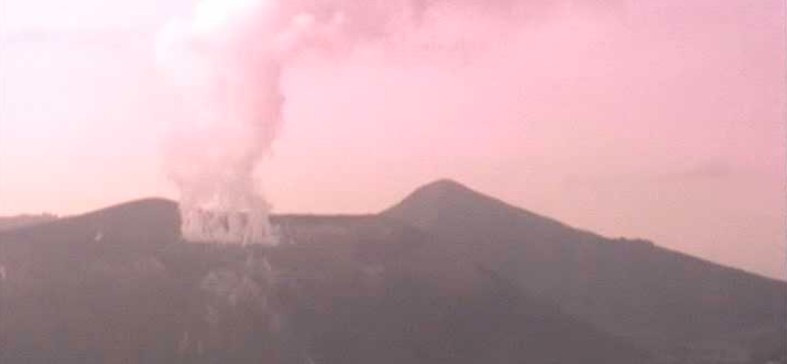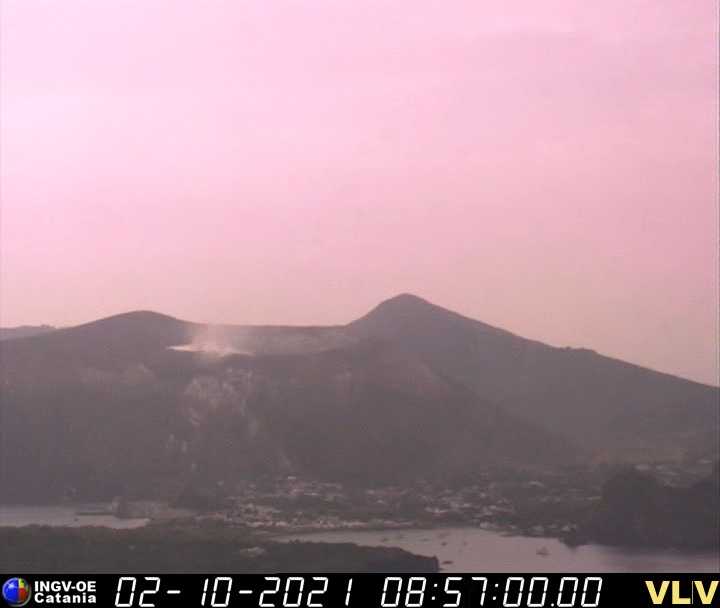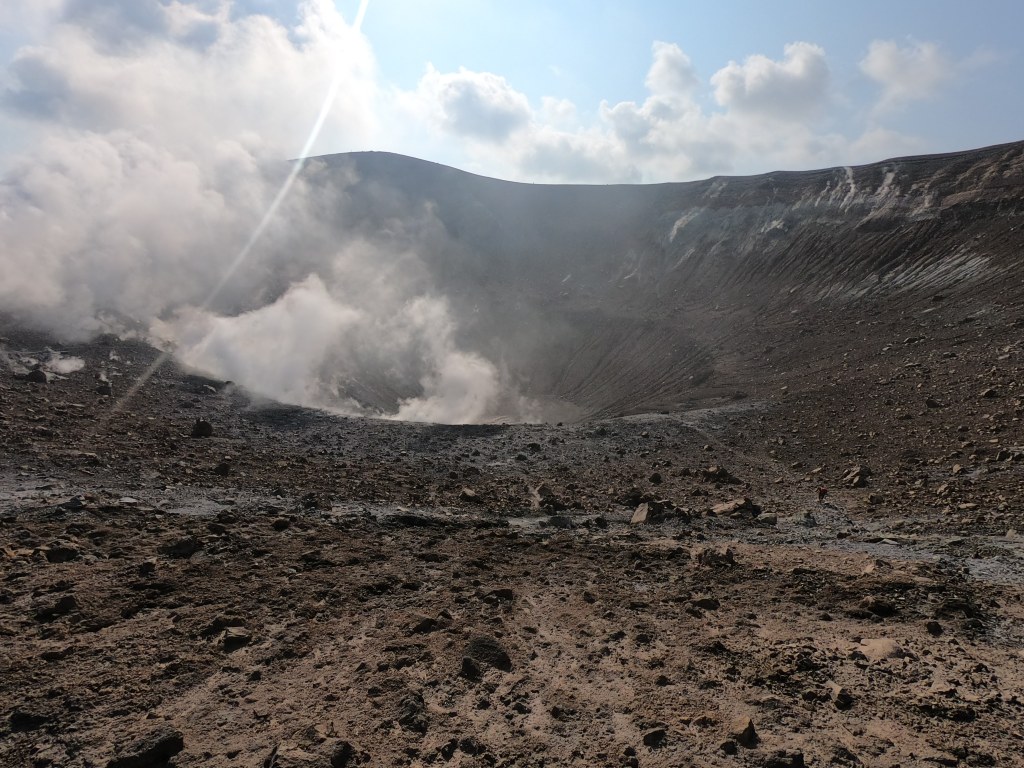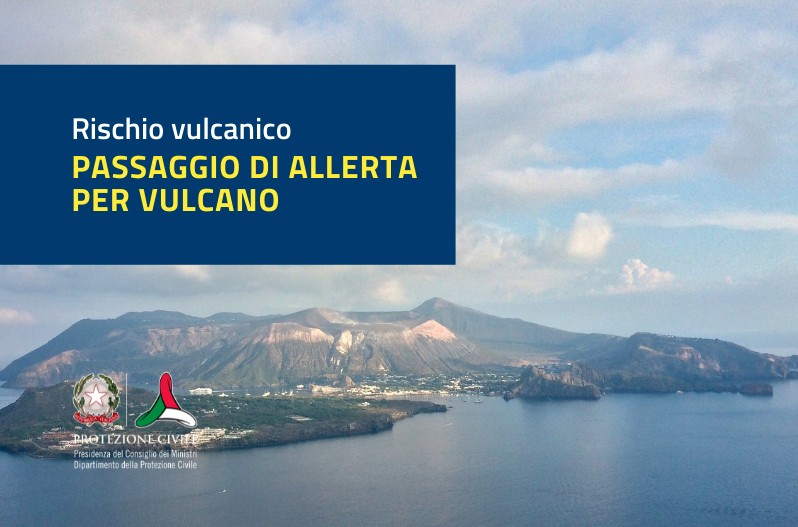Vulcano volcano Alert Level raised to Yellow, last eruption took place in 1890, Italy

Significant changes in various monitored parameters at Vulcano volcano in Italy over the past several weeks prompted the country's Civil Protection Department to raise the Volcano Alert Level to Yellow on October 1, 2021. The last eruption of this volcano took place in 1890 (VEI 3).
During the summer of 2021, and particularly from September, the Istituto Nazionale di Geofisica e Vulcanologia (INGV) monitoring systems highlighted changes in geophysical and geochemical signals recorded at Vulcano, in particular those linked to the activity of the hydrothermal system that feeds the fumaroles of the Fossa crater.
The temperature of the gases emitted by the fumaroles on the crater rim has increased and the composition of the gases shows an increase in CO2 and SO2 (carbon dioxide and sulfur dioxide).1
Local micro-seismicity linked to the dynamics of the fumarolic system has also shown an increase in recent weeks.

Image credit: INGV-OE

Image credit: INGV-OE

The La Fossa cone on September 29, 2021. Credit: INGV/Marco Anzidei
INGV is currently strengthening the existing monitoring and surveillance networks to better follow the evolution of this situation.
In recent days, they installed new seismic stations to integrate with those existing on the island and are also preparing the installation of a thermal camera.
In addition, the Palermo section of the INGV has activated 4 new stations in the town of Vulcano Porto to measure the flow of CO2 from the ground and the concentration of CO2 in the air.
Further surveys and measurement campaigns are planned for the next few weeks.
In particular, the annual GPS measurement campaign between the islands of Vulcano and Lipari will be carried out in mid-October, with particular detail in the area of La Fossa cone, which will allow a better assessment of the dynamics in progress.
Based on the changes described above, the Civil Protection Department has raised the Alert Level for the volcano from Green to Yellow on October 1.2
"The island of Vulcano already presents a widespread situation of risk for the population mostly due to gas-rich fumaroles and high temperatures, but at this stage, it must be remembered that they can intensify and extend over larger areas and therefore the danger is greater," the department said.

Image credit: Protezione Civil
In recent centuries, volcanic activity at the volcano has concentrated at the La Fossa cone and the last eruption took place between August 3, 1888, and March 22, 1890 (Volcanic Explosivity Index of 3).
Since the last eruption, La Fossa has gone through periods of different degassing intensities – from weak to strong – returning to emit large quantities of gas starting from 1977.
This gas emission activity occurs from a medium-temperature fumarolic field (100 °C / 212 °F
Hydrothermal manifestations of low temperature (100 °C / 212 °F) are instead present in the Faraglione and Baia di Levante area.
Between 1916 and 1927 and between 1988 and 1995 two notable increases in fumarolic gas temperatures were observed, up to 623 °C (1 153 °F) and 700 °C (1 292 °F), respectively. In the most recent crisis, monitoring systems also detected seismic activity and deformations.3
Geological summary
The word volcano is derived from Vulcano stratovolcano in Italy's Aeolian Islands.
Vulcano was constructed during six stages over the past 136 000 years.
Two overlapping calderas, the 2.5 km (1.5 miles) wide Caldera del Piano on the SE and the 4 km (2.5 miles) wide Caldera della Fossa on the NW, were formed at about 100 000 and 24 000 – 15 000 years ago, respectively, and volcanism has migrated north over time.
La Fossa cone, active throughout the Holocene and the location of most historical eruptions, occupies the 3 km (1.8 miles) wide Caldera della Fossa at the NW end of the elongated 3 x 7 km (1.8 x 4.3 miles) island.
The Vulcanello lava platform is a low, roughly circular peninsula on the northern tip of Vulcano that was formed as an island beginning more than 2 000 years ago and was connected to the main island in about 1 550 CE.
Vulcanello is capped by three pyroclastic cones and was active intermittently until the 16th century. The latest eruption from Vulcano consisted of explosive activity from the Fossa cone from 1898 to 1900.
This volcano is located within the Isole Eolie (Aeolian Islands), a UNESCO World Heritage property.4
References:
1 Cosa succede a Vulcano? – INGV Vulcani
2 Protezione civile: allerta gialla per il vulcano dell'isola di Vulcano – October 1, 2021
3 Vulcano – INGV Vulcani
4 Vulcano – Geological Summary – GVP
Featured image credit: INGV

With all the heavy emphasis on carbon emissions, I have often thought the concerned fail to recognize such an obvious source as volcanoes. The amount of carbon emissions occurring from a volcano far excedes what humans can do in the same period of eruption. So, how do humans intend to stop the earth from exhaling so much carbon dioxide? Believe me, I think restoring forests would be the most help in either case.